How to choose the best helmet for you
A bike helmet is the most important bike accessory you'll own. Whilst it's not against the law to ride without one, we highly recommend you do. Wearing a tough helmet can be the difference between a bump on the head and a concussion – or worse.
If you have been unfortunate to have 'used' your helmet in an accident then you should replace it, as any cracks and dents will compromise durability.
Every bike helmet we sell meets the required European Standard (EN 1078) for safety. The you spend on a helmet the lighter, more comfortable, better vented and easier to adjust it will be. Premium helmets will offer specific features such as aero profiling to improve performance.
What type of helmet do I need

Road Helmets
Road bike helmets are lightweight and come with plenty of venting to keep you cool when you’re pounding the tarmac.
High-end road helmets come with slick aero profiling to minimise drag and improve your performance. Read our road helmet guide to find out more
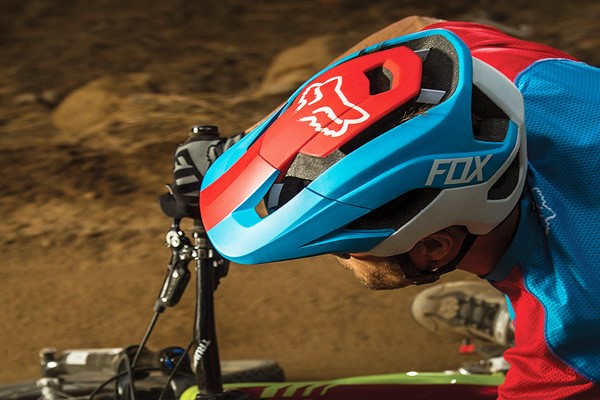
MTB Helmets
Mountain bike helmets are more durable with a thicker shell design and come with good venting. You’ll find extended protection around the side and rear of your head for maximum protection.
Most MTB lids come with a removable visor to protect against glare and debris. Find out more in our MTB helmet guide.

Full Face Helmets
Full Face helmets offer the ultimate protection for downhill mounting biking. A chin guard helps to keep your lower face shielded.

Skate Helmets
Skate helmets come with minimal venting in favour of a hardshell design offering side and rear protection. These stylish helmets are great for the skatepark or pump track.

Urban Helmets
Urban helmets blend features from road and MTB helmets with added visibility for safety. Urban helmets with integrated LED lights and reflective logos are ideal for commuting.
How do I get the right size helmet?
First, it’s best to measure the circumference of your head so you have a better idea of the right size you need.
1. Place a tape measure in the centre of your forehead
2. Wrap around your head just above your ears
3. Make sure the tape crosses the occipital bone (bump at the back of your head)
Helmet sizing
Not all brands follow the same sizing on their products. However, you can use our helmet size chart as a good guideline.
If you’re between sizes it is generally recommended to opt for the smaller as it’ll be snug and offer a more secure fit.
Head size
Small – 51 – 57cm
Medium – 54 – 60cm
Large – 57 – 63cm
Sizing is for guidance only. Sizing may be different between brands & products.

Should I get a helmet with MIPS or ANGi?
MIPS
A Multi-directional Impact Protection System (MIPS) is fitted between the helmet core and your head. MIPS helmets feature a low-friction layer inside a bike helmet that allows a multi-directional movement of 10-15mm on certain angled impacts. This is intended to reduce rotational force to the head to further protect you from injury.
MIPS is the original slip-plane technology, designed to reduces the rotational forces that result from certain impacts, but there are other systems as well. All these systems are integrated into the fit system, of the helmet, usually between the padding and the EPS foam protective layer. MIPS safety systems are found on MTB helmets at many different price points.
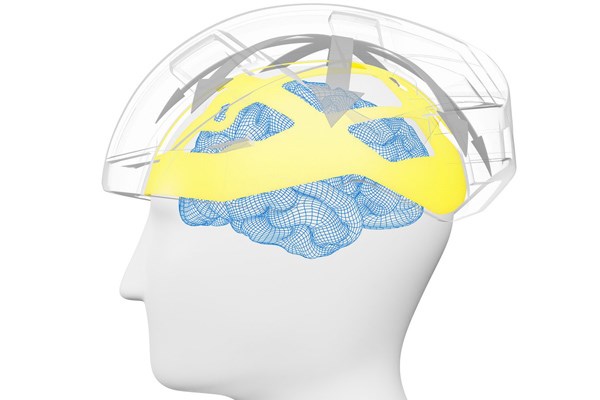
ANGi
Crash Sensors like the Specialized ANGi system automatically call for help when you have a crash. Crash sensors attach to your helmet, and some are supplied with them ready fitted. When the sensor detects forces consistent with a crash, it sends an alert to your smartphone which starts a countdown. If you’re hurt and unable to stop the countdown the app automatically sends a message with your location to your designated emergency contacts. You can even allow your contacts to follow your ride in real-time. A great feature for everyone’s peace of mind.

When should I replace my bike helmet?
Should I change it after time?
Many helmet manufacturers recommend changing your bike helmet every three years even with no impacts. This is because there is a constant knocking and pressing of the EPS core as it is used, stored, dropped, or placed on hard surfaces. Over time these tiny impacts will cause the EPS to lose volume so it will be less able to absorb energy if you have a big crash.

However, if you look after your helmet, for example by storing it in a padded bag instead of throwing it in the back of the car to bounce around with your shopping, then it will continue to offer good protection for longer. A bike helmets EPS core doesn’t automatically degrade over time, but you do need to look after it.
To avoid damage to your helmet it is best to store it in a cool dry place. Avoid solvents and extreme changes in temperature and don’t drop it or throw it around. Even very small amounts of damage can seriously affect the performance of a helmet. If you can see any damage at all on your helmet then you should replace it.
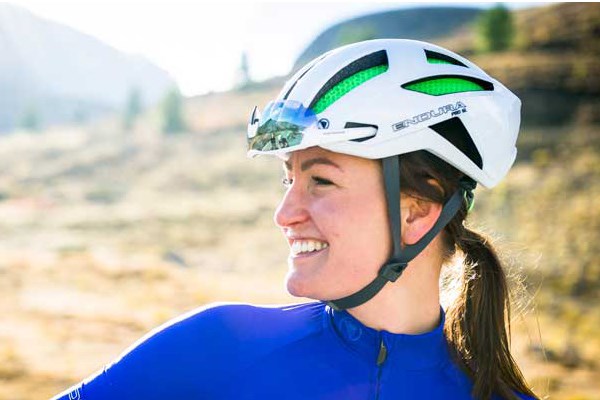
Should I change it after a crash?
If you hit your head in a crash, then the helmet should be replaced. The EPS core is designed for one-time use and if it is crushed it won’t give you the proper protection you need next time around. Even if the helmet looks fine, it may still be damaged. Small cracks in the EPS core may be hidden by the outer shell. These could cause the helmet to come apart if you hit it again in the same spot.
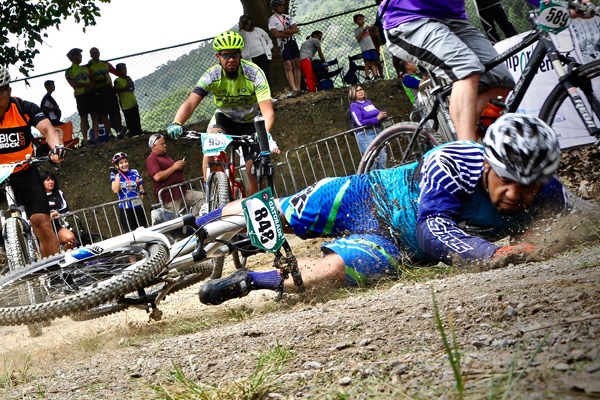
Fortunately, most helmet manufacturers offer a crash replacement policy so you can get a new helmet at a discount if you damage one in a crash. These policies vary from brand to brand, but most will give you a half-price helmet to replace one bought within the last couple of years. Check the specific brand's website for details on their policy.
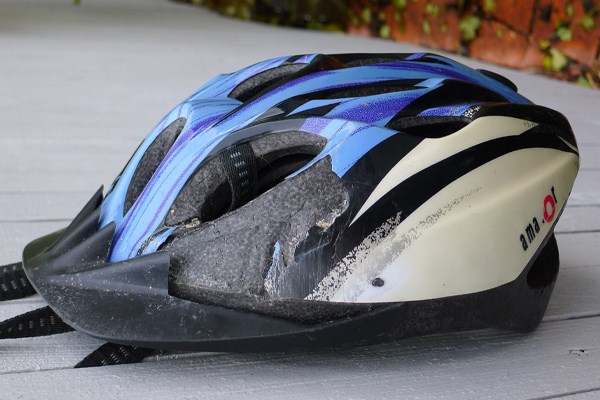
What is Crash Replacement?
Many manufacturers will offer a Crash Replacement policy. If you’re helmet has been involved with a crash, you can buy a replacement at a reduced rate. Often crash replacement is available if your helmet is up to 3 years old and you’re a UK resident.
Check with the manufacturer or supplier of your helmet to see if you’re eligible for a discount.
You can return your damaged helmet to the UK Kask supplier (Velobrands LTD) in return for a replacement model at 50% RRP.
Simply email kask@velobrands.co.uk or return your damaged helmet to:
- Velobrands Ltd
- Copplestone Mill
- Copplestone
- Crediton
- EX17 5NF
Please include your name, phone number, email address and proof of purchase. You will be contacted to arrange payment of your replacement and shipping.
You can return your damaged Giro helmet to the UK supplier Zyro for a replacement at a reduced rate. Email customer.services@zyro.co.uk with the following information:
- A picture of the damaged helmet
- A covering letter detailing the information of the accident
- Proof of purchase of the damaged helmet
- Details of which replacement helmet you would like. (Model, size and colour)
- Your Full Name and address
- Contact Telephone Number
You will be contacted to arrange the order of your replacement helmet. Your helmet will be dispatched within 7 working days.
To participate in the scheme you must have purchased your helmet within the last three years from one of our UK or Irish Retailers and be a resident in the UK or Ireland.
Please note not all helmets are eligible, see below for eligible helmets:
You can return your damaged Bell helmet to the UK supplier Zyro for a replacement at a reduced rate. Email customer.services@zyro.co.uk with the following information:
- A picture of the damaged helmet
- A covering letter detailing the information of the accident
- Proof of purchase of the damaged helmet
- Details of which replacement helmet you would like. (Model, size and colour)
- Your Full Name and address
- Contact Telephone Number
You will be contacted to arrange the order of your replacement helmet. Your helmet will be dispatched within 7 working days.
To participate in the scheme you must have purchased your helmet within the last three years from one of our UK or Irish Retailers and be a resident in the UK or Ireland.
Please note not all helmets are eligible, see below for eligible helmets:
The Bern Helmet Crash Replacement scheme allows you to purchase a replacement Bern helmet at a reduced price following a crash.
All transactions are made through the Bern Distributor, Ultra Sport Europe.
To be eligible you must supply proof of purchase, and have bought the helmet within 3 years. Please contact Ultra Sport customer service at info@ultrasporteu.com with the following information:
- Model and size of helmet damaged
- Photographs of the helmet clearly showing the damage
- Detailed information about the crash and damage to the helmet
- Original proof of purchase
- Details of shipping and billing address for replacement helmet
You will be contacted to confirm your replacement and arrange payment. You can call Ultra Sport on 01332 813150.
The Lazer Crash Replacement Programme is available only to customers that are resident in the UK & Ireland and purchased their helmet from a UK or Irish dealer. A helmet up to three years old can be replaced at a reduced price, if it has been involved in an accident. The replacement will always be the same model as the original or the nearest current equivalent if the original is no longer available.
The customer must first contact the Madison Warranty & Technical department to obtain a returns number, and then send in the following:
- The old helmet
- Information about the accident
- Proof of purchase of the old helmet
- A cheque or postal order made payable to Madison, a division of H. Young Operations Ltd for the appropriate amount (see charges below)
Prices are subject to change from time to time, a full list of the most up to date replacement costs can be found below:
These should be sent by the customer directly to:
Madison Customer Care Department, Madison Distribution Centre, Alston Drive, Bradwell Abbey, Milton Keynes, MK13 9HA. Tel: 01908 326032.
Madison will send the new helmet directly to the customer.
Most Popular Helmets
Frequently Asked Questions
To measure for a bike helmet, you will need to know the circumference of your head. Manufacturers mainly size using centimetres. Wrap a flexible tape measure around your head about an inch above your eyebrows to measure.
All cycling helmets sold in the UK meet safety standards. A cheap helmet is just safe though it will weigh more and have less ventilation than a higher-priced helmet. For a little more many helmets now come with MIPS technology, providing an extra degree of safety.
MIPS is an extra layer of protection in the helmet. It stands for Multi-directional Impact Protection System. It helps to reduce harmful forces that can be transmitted to the brain during a crash.
20 inches is 50.8 centimetres. For most manufacturers, a 50cm helmet will be a size Extra Small (XS) or Small (S)
A helmet should fit tightly, but not so tight that it is painful to wear. You should be able to wear your helmet all day without discomfort. Most have a ratchet type mechanism on the back allowing you to fine-tune the fit. The chinstrap should be tight enough that you cannot remove the helmet without unbuckling the strap.
A bike helmet's material can deteriorate over time. It is often recommended to replace every 3 years. UV sunlight, heat and sweat can all contribute to deterioration, along with the regular small knocks through ownership. If ever you have a hard crash, even if there is no visible damage to the helmet it is safest to replace with new.





